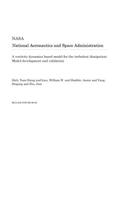
A Vorticity Dynamics Based Model for the Turbulent Dissipation
Series:
A new model dissipation rate equation is proposed based on the dynamic equation of the mean-square vorticity fluctuation for large Reynolds number turbulence. The advantage of working with the vorticity fluctuation equation is that the physical meanings of the terms in this equation are more clear than those in the dissipation rate equation. Hence, the model development based on the vorticity fluc
NaN
VOLUME
English
Paperback

A new model dissipation rate equation is proposed based on the dynamic equation of the mean-square vorticity fluctuation for large Reynolds number turbulence. The advantage of working with the vorticity fluctuation equation is that the physical meanings of the terms in this equation are more clear than those in the dissipation rate equation. Hence, the model development based on the vorticity fluctuation equation is more straightforward. The resulting form of the model equation is consistent with the spectral energy cascade analysis introduced by Lumley. The proposed model dissipation rate equation is numerically well behaved and can be applied to any level of turbulence modeling. It is applied to a realizable eddy viscosity model. Flows that are examined include: rotating homogeneous shear flows; free shear flows; a channel flow and flat plate boundary layers with and without pressure gradients; and backward facing step separated flows. In most cases, the present model predictions show considerable improvement over the standard kappa-epsilon model. Shih, Tsan-Hsing and Liou, William W. and Shabbir, Aamir and Yang, Zhigang and Zhu, Jian Glenn Research Center NCC3-233; RTOP 505-90-5K...
Price Comparison [India]
In This Series
Bestseller Manga
Trending NEWS




















